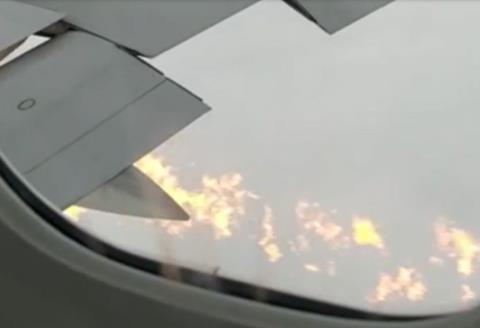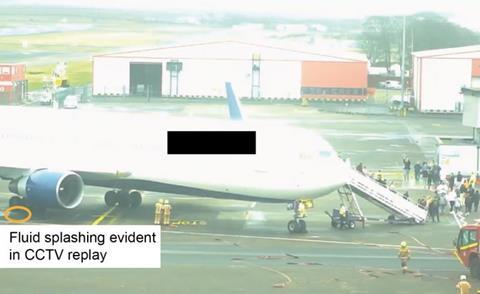Boeing has been examining whether slat-track housing drain tubes on 767s require further redesign, after vibration from an engine failure in Scotland caused a tube fracture, resulting in fuel leaking and igniting during flight.
The event involved a Delta Air Lines 767-300ER which – as it took off from Edinburgh on 10 February last year – suffered a high-pressure turbine blade fracture in its right-hand Pratt & Whitney PW4000 engine, which also damaged five other blades.
This caused an imbalance and vibration which was transmitted to a water-drain tube attached to an inboard slat-track housing.
This housing, which serves to store the slat-extension mechanism while the slats are retracted, protrudes into the wing fuel tank. The drain tube is fitted to the tip of the housing and carries any pooled water from the housing, through a rib, into a dry bay where it exits the wing via a drain hole.

The Delta 767 (N197DN) had, ironically, undergone a modification in 2012 to replace flexible steel drain tubes with rigid aluminium drain tubes – a modification mandated after two 767 occurrences in which vibrations, following an engine event, caused the steel tubes to crack.
According to the UK Air Accidents Investigation Branch, the level of imbalance in the Delta event “exceeded” that observed in the previous two 767 incidents.
Fracture of the drain tube enabled fuel from the wing tank to leak through the tube, into the dry bay, and out of the drain hole – where it subsequently ignited in the hot engine exhaust, a situation captured by a passenger’s video.
Pilots of the twinjet, unaware of the flames, opted to divert to Glasgow Prestwick where the aircraft landed safely. Ground crews noticed fuel spilling from the wing as the 767 parked near the terminal.

“The wind was blowing the fuel towards the hot brakes and there was a risk of a fuel fire,” says the inquiry. “Passengers were rapidly disembarked, and actions were taken to contain and stop the fuel leak.”
Investigators state that the aircraft landed with 99,000lb (44,900kg) of fuel, comprising 40,000lb in each wing tanks and 19,000lb in the centre tank. The inquiry estimates some 1,100lb of fuel was lost from the twinjet between the drain tube fracture and the completion of fuel transfer after the aircraft parked on stand.
Analysis of the drain tube indicated that a crack “started and fully fractured within this single flight”.
Boeing has since initiated a project to identify possible reliability improvements to the drain tube design, and the inquiry has formally recommended that the US FAA requires Boeing to demonstrate that the design “continues to comply” with certification requirements.





























